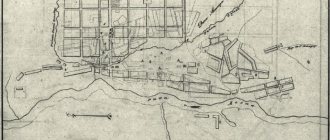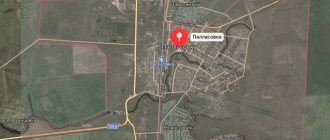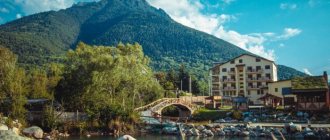Where is Bryansk
Many people believe that Bryansk is located on the territory of Belarus. If you look at the map, you can see that it is located in the western part of the Central Russian Upland at an altitude of 250 meters above sea level. Having looked at where the city of Bryansk is located, you will see that it is located on the border of three Slavic states - Russia, Ukraine, and Belarus. The exact location is where two small rivers Snezheti and Bolva flow into the Desna.
Bryansk lies surrounded by numerous settlements: at a distance of 129 km from Orel, 232 km from Kaluga, 186 km from Zheleznogorsk, 173 km from Klintsy, 264 km from Kursk, 329 km from Vyazma, 384 km from Moscow.
Industrial centre
Post-war Bryansk had to be rebuilt. Housing, hospitals, schools, kindergartens, palaces of culture, libraries, and cinemas were built. The city became the largest industrial center of the USSR. Metalworking, mechanical engineering, electrical, electronic, chemical, woodworking and food enterprises were mainly concentrated here.
Today, Bryansk, where more than 1,200 industrial enterprises are located and operate, is the industrial center of the country, producing diesel locomotives, cars, road equipment, including asphalt pavers, graders, agricultural machines, construction materials, textiles and food products.
Population of Bryansk
The population of Bryansk is 402,675 people. In terms of national composition, the main part are Russians and Ukrainians. In recent years, there has been a decrease in population growth, which can be seen from the table data.
| 2005 | 2006 | 2007 | 2008 | 2009 | 2010 |
| 424 100 | 420 000 | 416 200 | 413 900 | 411 798 | 415 721 |
| 2015 | 2016 | 2017 | 2018 | 2019 | 2020 |
| 407 256 | 405 921 | 406 553 | 405 723 | 404 793 | 402 675 |
Transport node
Located at the intersection of strategic routes from east to west and 350 kilometers from Moscow, Bryansk, where a large railway interchange is located, plays a vital role in the life of the western regions. It is through it that the roads to Moscow and Smolensk, Orel and Vyazma, Ukraine and Belarus go. A daytime high-speed train to Moscow has been launched, which allows you to get to the capital in a few hours. There are 3 railway stations in the city.
In addition, Bryansk is a junction of federal highways: Moscow - Kyiv (M3), Bryansk - Kobrin (M13), Orel - Rudnya (A141). The city has a large bus station and a suburban bus station. An international airport is located 14 kilometers from Bryansk.
History of Bryansk
The history of its origin goes back to the last quarter of the 10th century. The city was founded as a fortress. Served as protection during the invasion of the Mongol-Tatar yoke. The dense forests here scared away enemies.
During the reign of Vladimir Monomakh, the “Straight Road” was built, which contributed to the strengthening of Rus'. During the attack of the Mongol-Tatars in XIII, the city was moved from Chashin Kurgan to Pokrovskaya Gora.
In 1356, the city, destroyed by the Tatars, was annexed to the Principality of Lithuania. Bryansk was returned to the Russian state by Ivan III in 1500. In 1607, the city was besieged twice by the troops of False Dmitry II.
Peter I built a shipyard in Bryansk. In 1783, factories for the production of field and siege artillery were introduced, and a joint-stock company was founded. At the end of the 19th century, Bryansk became a major railway center. In 1930 it received the status of a city of regional subordination.
From 1941 to 1943 the city was under the occupation regime of Nazi Germany. In 1944, Bryansk became the administrative center of the Bryansk region. In 1950, the village of Karachizh and the village of Uretsky joined. In 1956, Bezhitsa became a district of the city.
Center for children and youth tourism and excursions in Bryansk
XVII city competition of research works of school local history students “Chronicle of the Bryansk Territory”In order to involve students in educational institutions of Bryansk in the study of national history, cultural and natural heritage of the Bryansk region through the organization of research activities, the XVII city competition of research works of students in school local history “Chronicle of the Bryansk Territory” is being held in Bryansk.
Students in grades 8-11 of general education institutions (including activists of school museums) and additional education institutions in Bryansk take part in the competition.
The competition is held in two rounds: the first round will take place from December 13, 2021 to January 14, 2022; the second round will take place on 02/09/2022.
Contestants prepare a local history research paper according to one of the subprograms of the tourism and local history movement “Fatherland”: chronicle of their native land, military history, fellow countrymen, cultural and natural heritage, my family tree.
The best research papers will be recommended for participation in the regional stage of the research paper competition in local history.
The competition is held as part of the implementation of a social project of a civil-patriotic orientation in the field of local history “Remember! We are proud! Let's inherit!”, implemented with the support of the Presidential Grants Fund.
Competition regulations
Competition of research papers on local history of students from children's associations of the Bryansk Tourism Center
A competition of research papers on local history among students of children's associations of the Bryansk Tourism Center is held with the aim of introducing students to national history, the cultural and natural heritage of their native land, nurturing the spiritual and moral traditions of family relationships through the organization of research activities, the development of their cognitive interests and abilities.
The competition is held in two rounds. To participate in the first round, participants prepare a local history research paper according to one of the subprograms of the tourism and local history movement “Fatherland”: chronicle of their native land, military history, fellow countrymen, cultural and natural heritage, my family tree. Works are due from November 1 to November 30, 2021. The second round is held on January 6, 2022 at 10.00 at the Bryansk Tourism Center in the form of a conference. The winners and runners-up of the competition are awarded diplomas from the Bryansk Tourism Center. The best research works will be recommended for participation in the municipal stage of the competition of research works on local history “Chronicle of the Bryansk Territory”.
Competition regulations
XIX Ser- Russian competition of educational and methodological materials to help teachers, organizers of tourism, local history and excursion work with students and pupils
In order to improve scientific, methodological, pedagogical activities aimed at ensuring high quality of additional education for children in tourism and local history, educational activities, organizing tourism and local history work with students in educational organizations of preschool, general and additional education in recreation and recreational organizations for children, Federal Center additional education and organization of recreation and health improvement for children holds the XIX All-Russian competition of educational and methodological materials to help teachers, organizers of tourism, local history and excursion work with students and pupils.
The Competition is open to management, teaching staff, methodologists and other specialists (individual authors and teams of authors) of educational organizations of all types, recreation and health organizations for children, sports, tourism, culture and others, as well as individual entrepreneurs organizing tourism and local history, excursion work with students.
Position
Coat of arms
The coat of arms of Bryansk is presented in the form of a French shield. At the top there is a red field, at the bottom there is a green field. The latter depicts a golden mortar with pyramids of cannonballs on both sides of the weapon. The left one (just above the mortar) has six large charges, the right one (at the carriage level) has 10 small ones. There are 5 golden elements on the green field. They symbolize plant shoots, rebirth and prosperity.
The ratio of the top of the shield to the bottom is 2:1. It is allowed to border the heraldry with a gold frame around the perimeter of the shield.
The coat of arms was approved on December 23, 2009 by Decision of the Bryansk City Council of People's Deputies No. 222.
Starodub - ancient and small in number
Today the number of people living in Starodub (as of 2018) is 18 thousand people. This is an ancient city, the exact date of its foundation is unknown. It has been established that in 1080 we were already talking about a fairly powerful settlement. In the past it was the center of the Seversk land. The property of this place is the layout that has been preserved since ancient times, which makes it easy to reconstruct ancient settlements.
The city-forming enterprises belong to the food industry. Starodubsky cheese and canned food are produced here. Previously, bread and local sausages were produced here. At the moment, both companies have gone bankrupt. The city's greatest potential is related to tourism, but for this it needs to be developed.
Novozybkov is large by local standards
Novozybkov ranks third in terms of population in the region. As of 2021, about 40 thousand people live here. This settlement is attractive for its unusual history. It was founded in 1701, mainly Old Believers were located here.
Gradually the city grew and acquired the status of a district town. The cultural context as a place of peculiar exiles and dissidents remained. In modern history, this is emphasized by the fact that the surrounding areas were exposed to radioactive contamination as a result of the accident at the Chernobyl nuclear power plant. The exclusion zone begins 1 km west of the city.
Railway stations
At the moment, there are two full-fledged railway stations and one passenger station in Bryansk:
- Train station "Bryansk-Orlovsky" (or Bryansk-I) on Rechnaya street, 2A/4
- Train station "Bryansk-Lgovsky" (Bryansk-II) on Belorusskaya street, 33.
- Station "Ordzhonikidzegrad" in the Bezhitsky district on Vokzalnaya street, 15.
Both stations and the passenger station belong to the Moscow Railway network, connecting 14 constituent entities of the Russian Federation.
Short- and long-distance trains depart from the Bryansk-Orlovsky station throughout Russia and neighboring countries. The geography of destinations is quite extensive. This includes Moscow, Kyiv, Odessa, Klimov, Minsk, Kaliningrad, St. Petersburg, Sochi, Chisinau, Gomel, Brest, Smolensk and many other cities.
The Bryansk-Lgovsky railway station also serves short- and long-distance trains, the geography of directions is almost the same as from the Bryansk-I station. From here you can get direct access to Moscow, Odessa, Khmelnitsky, Gomel, Minsk, Mineralnye Vody, Sochi, Anapa, Lgov and some other cities.
Bryansk-Orlovsky and Bryansk-Lgovsky stations complement each other. If trains run from one station to certain directions several times a week, then from another station (to the same direction) every day.
Although from both stations you can get to almost anywhere in the Bryansk region itself, the Ordzhonikidzegrad station is still used by residents to travel by train to Zhukovka and Roslavl (Smolensk region).
Dyatkovo is a village with city status
This village has been known since 1626. City status was received already in 1924. At the moment, the total number of residents is about 26.7 thousand. At the same time, the trend is negative, which is primarily due to the lack of places for employment and weak prospects. The majority of the population (98%) are Russians.
The main city-forming enterprise is the Dyatkovo Crystal Factory. Its products are widely known not only in Russia, but also abroad. Thanks to this plant, it was possible to erect a unique temple, the Burning Bush, where the only crystal iconostasis in the world was installed. The point is also widely known for its sources. In recent years, natural and architectural attractions have begun to be revived, and interest in the original crystal museum has increased. All this creates good potential for the development of the tourism industry.











